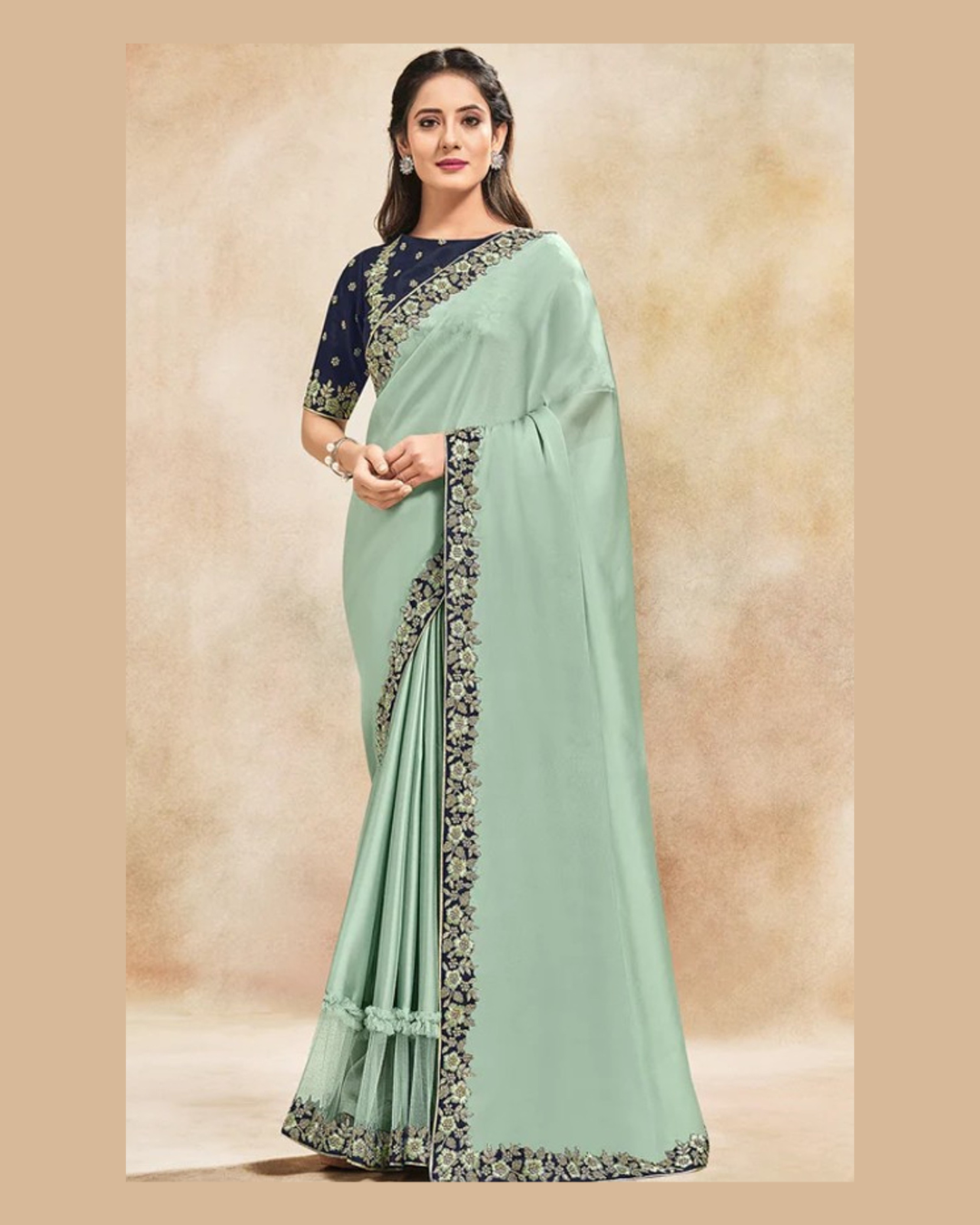India's rich textile heritage boasts a variety of traditional crafts, and when it comes to sarees, gota patti sarees and zari work sarees are among the most cherished. Both are known for their opulent appearance and intricate detailing, but they are quite different in their origins, techniques, and appeal. Let’s break down the differences and understand which one suits your style and occasion.
What is a Gota Patti Saree?
A gota patti saree features a traditional form of embroidery that originated in Rajasthan. The technique involves using small pieces of zari ribbon—usually in gold or silver—cut into shapes and hand-stitched onto fabric to create elaborate motifs. These designs often include florals, vines, and paisley patterns.
Key Features of Gota Patti:
-
Originates from Rajasthan
-
Uses ribbons made from metallic threads
-
Commonly found on georgette, chiffon, or net fabrics
-
Lightweight and festive
-
Often worn during day weddings, mehendi, and haldi functions
Gota patti embroidery stands out because of its mirror-like shine and rich appearance, all while remaining lightweight and comfortable to wear in warmer climates.
What is Zari Work?
Zari work is an ancient form of textile embellishment that uses fine threads of gold, silver, or metallic yarns. These threads are either woven into the fabric or embroidered to form intricate patterns. Zari work has royal roots and was widely popularized during the Mughal era.
Key Features of Zari Work:
-
Traditionally woven into silk or brocade
-
Often heavier and more intricate
-
Common in bridal wear and luxurious ethnic garments
-
Includes complex patterns like florals, peacocks, and vines
-
Shimmers with elegance, making it ideal for grand occasions
Zari work exudes richness and is typically reserved for formal or nighttime events like weddings and receptions.
Gota Patti vs Zari Work: A Quick Comparison
| Feature | Gota Patti Saree | Zari Work |
|---|---|---|
| Technique | Appliqué ribbon embroidery | Woven/embroidered metallic threads |
| Look | Sparkly and light | Rich and ornate |
| Weight | Lightweight | Heavier |
| Fabric | Chiffon, georgette, net | Silk, brocade, velvet |
| Use | Daytime functions, festivals | Weddings, receptions, royal occasions |
| Cost | Affordable to mid-range | Often high-end, luxury pricing |
Which One Should You Choose?
Choosing between a gota patti saree and zari work depends on your occasion, budget, and personal taste.
-
Go for a gota patti saree if you're attending a daytime wedding, festive pooja, or want something elegant yet light. It's budget-friendly and easy to carry.
-
Opt for zari work when you want a show-stopping outfit for a wedding, engagement, or night event. It offers a luxurious look but may feel heavier.
Final Thoughts
Both gota patti sarees and zari work sarees are masterpieces of Indian craftsmanship. Whether you love the traditional shimmer of zari or the playful sparkle of gota patti, each has its unique charm. Understanding the differences helps you choose the perfect saree that complements both your style and the occasion.

